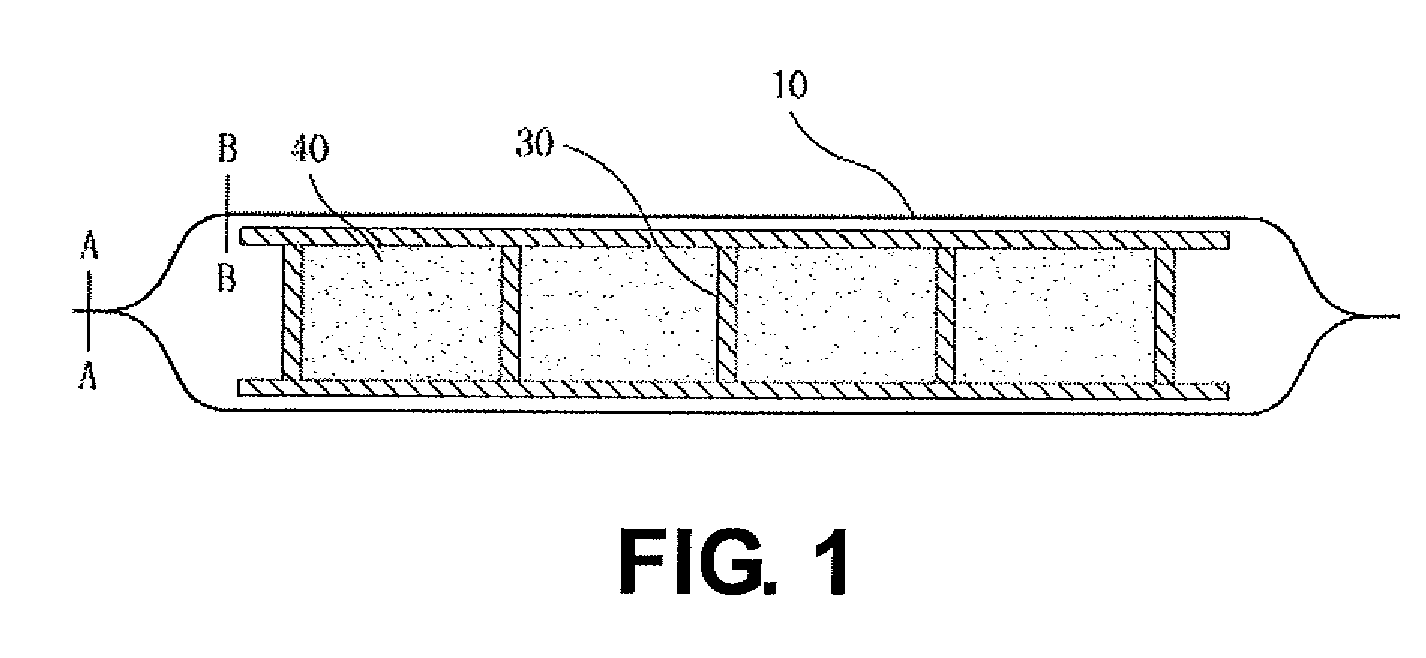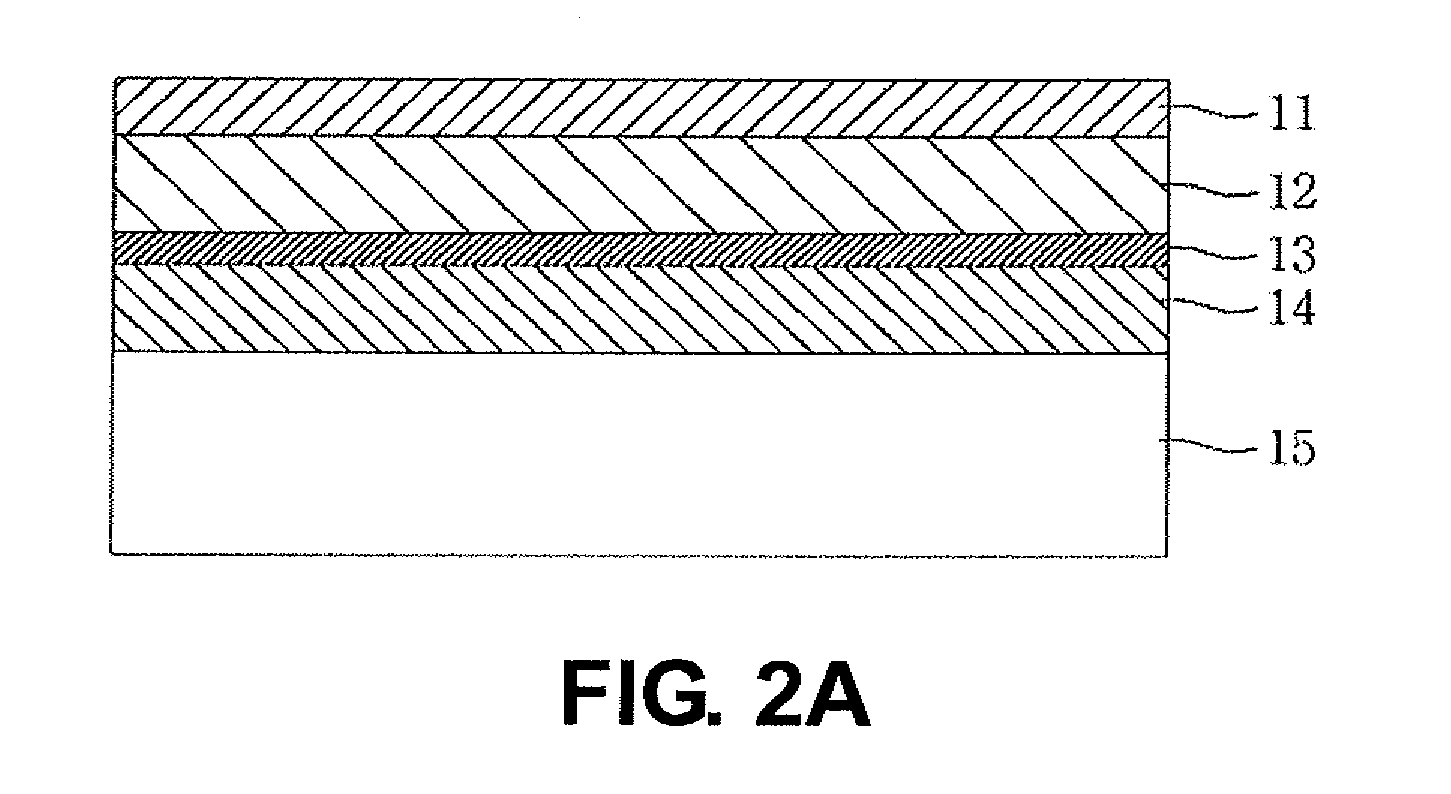Vacuum insulator
a vacuum insulator and insulating material technology, applied in the direction of insulation for cooling apparatus, domestic cooling apparatus, lighting and heating apparatus, etc., can solve the problems of easy air infiltration, difficult to break down conventional buildings, and too thick thickness of insulating materials to build economic buildings, so as to improve vacuum maintenance performance and reduce air infiltration through adhesion parts of the envelope
- Summary
- Abstract
- Description
- Claims
- Application Information
AI Technical Summary
Benefits of technology
Problems solved by technology
Method used
Image
Examples
first embodiment
[0053]FIG. 3 is a top view for showing the structure of the vacuum insulator according to a first embodiment of the present invention. FIG. 4 is a cross sectional view of showing an internal structure of the vacuum insulator according to the first embodiment of the present invention.
[0054]As shown in FIGS. 3 and 4, the vacuum insulator of the first embodiment of the present invention includes an internal structure 300, a filler 200 for filling spaces of the internal structure 300, and an envelope 100 for surrounding the internal structure 200.
[0055]The internal structure 300 is designed to have minimal heat transmission to endure the atmospheric pressure. In addition, the internal structure 300 is preferably formed of material having high ratio of a tensile strength to heat conduction coefficient. For example, polymer is used as a result of considering tensile strength, heat conduction rate and manufacture factors. More specifically, Polycarbonate or Polyimide is preferably used amo...
second embodiment
[0081]FIG. 8 is a cross sectional view of the end of the envelope for the vacuum insulator according to a second embodiment according to the present invention (along A-A in FIG. 7).
[0082]As shown in FIG. 8, in the end of the envelope for the vacuum insulator, the upper envelope A and the lower envelope B are adhered by the heat adhesion part H. In the vacuum insulator according to the present invention, since a metal layer 200 is inserted to the heat-adhesion part H to reduce air infiltration through the heat-adhesion part H, a gap between the metal layer 113a of the upper envelope A and the metal layer 113b of the lower envelope B can be decreased. Here, the upper envelope A has a structure in which a Polyethylene terephthalate film PET 111a, a Low density polyethylene film LDPE 112a and a metal layer 113a are stacked. The lower envelope B has a structure in which a Polyethylene terephthalate film PET 111b, a Low density polyethylene film LDPE 112b and a metal layer 113b are stacke...
third embodiment
[0087]FIG. 9 is a cross sectional view of an end of the envelope for the vacuum insulator according to a third embodiment of the present invention (along A-A in FIG. 7).
[0088]As shown in FIG. 9, at an area facing the internal structure in the end of the envelope for the vacuum insulator according to the third embodiment of the present invention, the upper envelope A and the lower envelope B are adhered by a heat adhesion part H. At a area in the end of the envelope, the upper envelope A and the lower envelope B are adhered by polyurethane 300. The upper envelope A is a portion where a Polyethylene terephthalate film PET 121a, Low density polyethylene film LDPE 122a and a metal layer 123a are stacked. In addition, the lower envelope B is a portion where a Polyethylene terephthalate film PET 121b, a Low density polyethylene film LDPE 122b and a metal layer 123b are stacked. In addition, the heat adhesion part H is composed of a LDPE Lowdensity polyethylene film 124a, 124b, and Linear-...
PUM
| Property | Measurement | Unit |
|---|---|---|
| aaaaa | aaaaa |
Abstract
Description
Claims
Application Information
 Login to View More
Login to View More - R&D
- Intellectual Property
- Life Sciences
- Materials
- Tech Scout
- Unparalleled Data Quality
- Higher Quality Content
- 60% Fewer Hallucinations
Browse by: Latest US Patents, China's latest patents, Technical Efficacy Thesaurus, Application Domain, Technology Topic, Popular Technical Reports.
© 2025 PatSnap. All rights reserved.Legal|Privacy policy|Modern Slavery Act Transparency Statement|Sitemap|About US| Contact US: help@patsnap.com



